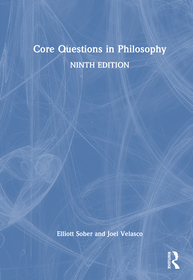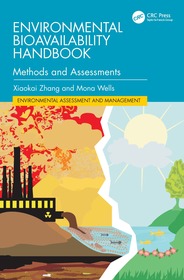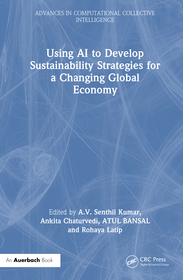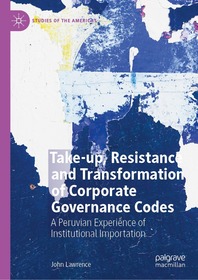
Soil Degradation, Desertification and Restoration
Application of Geospatial Technology and Modeling
Series: Sustainability Solutions; 1;
- Publisher's listprice EUR 213.99
-
88 752 Ft (84 526 Ft + 5% VAT)
The price is estimated because at the time of ordering we do not know what conversion rates will apply to HUF / product currency when the book arrives. In case HUF is weaker, the price increases slightly, in case HUF is stronger, the price goes lower slightly.
- Discount 12% (cc. 10 650 Ft off)
- Discounted price 78 102 Ft (74 383 Ft + 5% VAT)
Subcribe now and take benefit of a favourable price.
Subscribe
88 752 Ft

Availability
Not yet published.
Why don't you give exact delivery time?
Delivery time is estimated on our previous experiences. We give estimations only, because we order from outside Hungary, and the delivery time mainly depends on how quickly the publisher supplies the book. Faster or slower deliveries both happen, but we do our best to supply as quickly as possible.
Product details:
- Publisher Springer Nature Switzerland
- Date of Publication 1 January 2026
- Number of Volumes 1 pieces, Book
- ISBN 9783031922763
- Binding Hardback
- No. of pages580 pages
- Size 235x155 mm
- Language English
- Illustrations XXVI, 580 p. 142 illus., 128 illus. in color. Illustrations, black & white 700
Categories
Long description:
This book presents a comprehensive geospatial technology approach to data mining, data analysis, modeling, risk assessment, visualization, and management strategies, with a specific focus on various aspects of soil degradation-induced land degradation and desertification. It explores advanced methodologies leveraging open-source software, R statistical programming, Google Earth Engine, and modern artificial intelligence techniques. Particular emphasis is placed on recent advancements in data mining and robust modeling approaches related to extreme events associated with land degradation crises.
The volume brings together recent developments and rigorous applications of geospatial and geostatistical techniques in the context of soil degradation and desertification. It covers a wide range of analytical methods, including the Analytic Hierarchy Process (AHP), Multi-Criteria Decision Making (MCDM), Logistic Regression (LR), Evidential Belief Function (EBF), as well as supervised and unsupervised classification algorithms. Additionally, it highlights the use of Artificial Neural Networks (ANN), Machine Learning Algorithms (MLA), Support Vector Machines (SVM), Fuzzy Logic (FZ), Radial Basis Function (RBF) networks, General Regression Neural Networks (GRNN), Probabilistic Neural Networks (PNN), Mixture Density Networks (MDN), Self-Organizing Maps (SOM), and various hybrid computational techniques.
Table of Contents:
Part-I: Soil Degradation and Desertification.- Comprehensive Review on Surface Soil Erosion: Current Assessment Methods, Challenges, and Future Directions.- Concept of Soil Quality, it’s Assessment and Mapping through Geoinformatics and GIS based platforms.- Assessment Soil Surface Erosion by USLE and RUSLE Geospatial Models: A Review.- Mapping Soil Erosion Risk and Prioritizing Watersheds for Soil and Water Conservation Measures in the Sylhet Haor Basin, Bangladesh using Geospatial Techniques.- Geospatial modelling and mapping of Soil erosion using GEE platform: A case study from Budhabalanga River Basin, Odisha, India.- Capturing the Spatio-temporal Soil loss dynamics for Subarnarekha River basin in GEE platform.- Geo-spatial techniques for mapping, monitoring, and modelling for cultivable soil.- Assessing and Identifying the Soil Erosion-Prone Areas Using Multi-Criteria Decision-Making model and GIS Techniques in Kadavur Basin, Central part of Tamil Nadu, IndiaRake.- Land degradation vulnerability assessment in a semi-arid ecosystem in India using geospatial techniques: A case study of Nashik, Maharashtra.- Geoinformatics Based Modeling for Comprehensive Soil Quality Assessment, Monitoring and Sustainable Management.- Geospatial Analysis of Soil Quality: GIS-Based Mapping for Sustainable Land Management.- Soil erosion assessment in the Chichaoua watershed (Morocco) Using the RUSLE model and geospatial techniques.- Part-II: Soil Health Restoration : Techniques and Innovations.- Advancing Soil Quality Assessment: Precision mapping through GIS Techniques for Sustainable Land Management.- Surface soil and water conservation management: a pathway to sustainable ecosystem resilience and agricultural productivity.- Soil quality restoration zone mapping using GIS-based machine learning techniques.- In-Situ Soil and Water Conservation for Sustainable Agriculture.- Land Suitability Assessment for Agriculture using AHP and GIS in North -Western Himalayan region of Kashmir valley to achieve Sustainable agriculture.- Engineering approaches for soil erosion control and restoration: advancements in sustainable practices and technologies.
More

Soil Degradation, Desertification and Restoration: Application of Geospatial Technology and Modeling








